Global Market Comments
December 20, 2018
Fiat Lux
Featured Trade:
(THE GLASS HALF EMPTY MARKET)
($INDU), (SPY)
(HOW TO EXECUTE A VERTICAL BULL CALL SPREAD),
(AAPL)
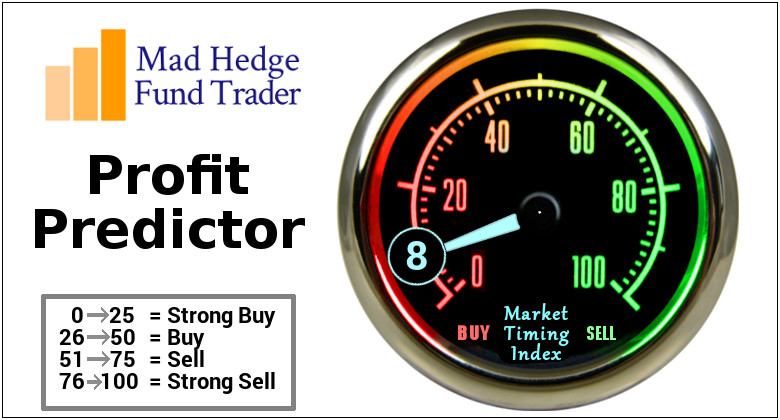
Global Market Comments
December 20, 2018
Fiat Lux
Featured Trade:
(THE GLASS HALF EMPTY MARKET)
($INDU), (SPY)
(HOW TO EXECUTE A VERTICAL BULL CALL SPREAD),
(AAPL)

Dovish, but not dovish enough.
That seems to be the judgment of the markets today in the wake of the Fed’s decision to raise interest rates by 25 basis points. The overnight range for Fed funds is now 2.25%-2.50%.
The Dow Average soared by 350 points going into the decision. Then it plunged by 900 points to 23,200, a new low for 2018. It was one of the largest range days in market history.
Traders chose to focus only on the bad news and completely ignore the good. That makes this a totally “glass half empty” market.
Never mind Chairman Jerome Powell’s statement that the Fed was cutting back its 2019 forecast from three interest rate hikes to only two. Stocks should have rallied 1,000 points on just that! And they still might!
Powell also redefined the meaning of the word “neutral”, taking it down from 3.0% to 2.8%. That means only one more quarter-point hike would take us to the low end of neutral, and that might be it. That should have been worth another 1,000 points, and we still might get that as well.
The Fed affirmed that the economy is still generally strong and that unemployment is at historic lows. Nothing to worry about here.
You can see where I’m going with this.
Down 3,800 points from the October high, stocks are now approaching stupidly cheap prices and valuations. Call it insanely cheap. What we are seeing here is the coiling up of a spring that will lead to an explosive upside move.
That may happen with the quadruple witching options expiration on Friday, the last real trading day of the year. It may wait until January 2, the first trading day of 2019. But coming it is.
And let me throw a theory at you which a hedge fund friend bounced off of me yesterday while I was on one of my legendary night hikes.
What if we really have been in a bear market since January 31 and we are now approaching the end of it? That would give us a typical one-year long bear market from which we are about to blast out to the upside.
When does this new bull market begin? When the last week hands intent on avoiding another 2008 repeat bails on their holdings. In other words, it could happen any day now.
Interesting food for thought.

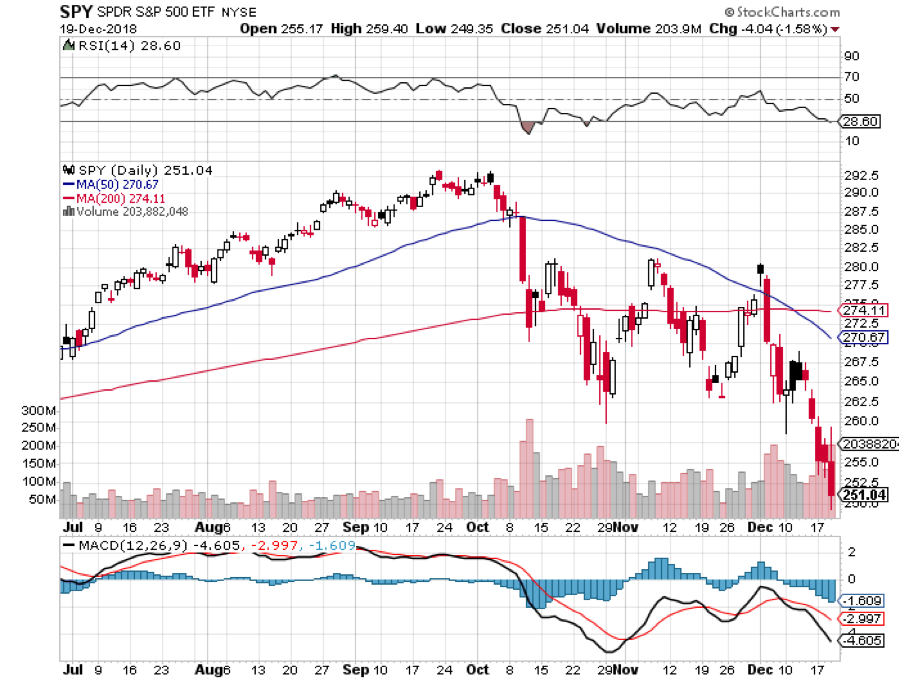
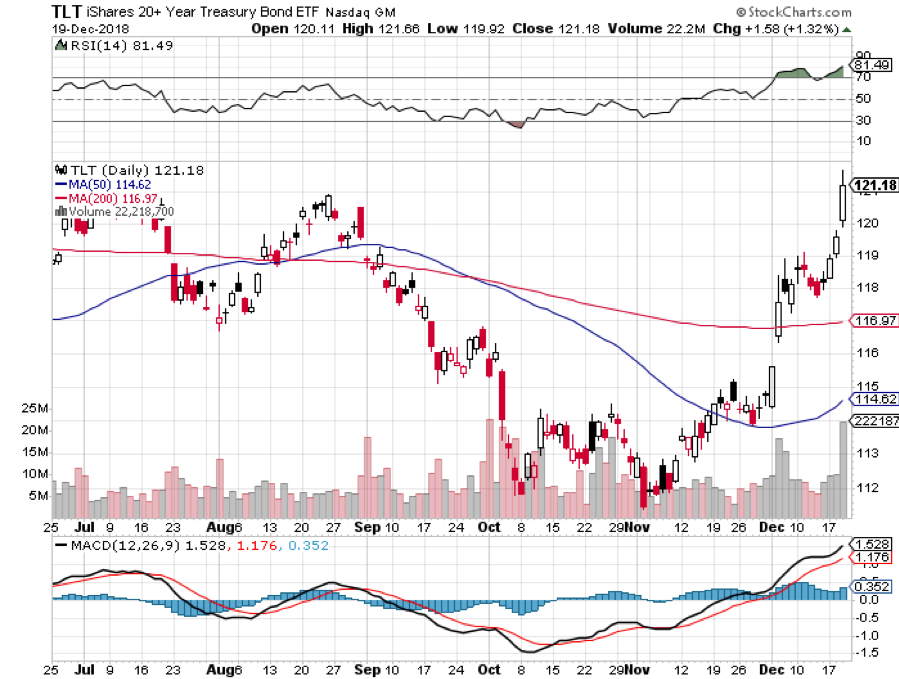

Global Market Comments
December 17, 2018
Fiat Lux
Featured Trade:
(THE MARKET OUTLOOK FOR THE WEEK AHEAD, or THERE’S NO SANTA CLAUS IN CHINA)
($INDU), (SPY), (TLT), (AAPL), (AMZN), (NVDA), (PYPL), (NFLX)

On Friday, five serious hedge fund managers separately called me out of the blue and all had the same thing to say. They had never seen the market so negative before in the wake of the worst quarter in seven years. Therefore, it had to be a “BUY”.
I, on the other hand, am a little more cautious. I have four 10% positions left that expire on Friday, in four trading days, and on that day I am going 100% into cash. At that point, I will be up 3.5% for the month of December, up 31.34% on the year, and will have generated positive return for one of the worst quarters in market history.
I’m therefore going to call it a win and head for the High Sierras for a well-earned Christmas vacation. After that, I am going to wait for the market to tell me what to do. If it collapses, I’ll buy it. If it rockets, I’ll sell short. And I’ll tell you why.
These are not the trading conditions you would expect when the economy is humming along at a 2.8% annual rate, unemployment is running at a half-century low, and earnings are growing a 26% year on year. You can’t find a parking spot in a shopping mall anywhere.
However, the lead stocks like Apple (AAPL), Amazon (AMZN), and Netflix (NFLX) have plunged by 30%-60%. Price earnings multiples dropped by a stunning 27.5% from 20X to 14.5X in a mere ten weeks. Half of the S&P 500 (SPY) is in a bear market, although the index itself isn’t there yet. I would rather be buying markets on their way up than to try and catch a falling knife.
There is only one catalyst for that apparent yawning contradiction: The President of the United States.
Trump has created a global trade war solely on his own authority. Only he can end it. As a result, asset classes of every description are beset with uncertainty, confusion, and doubt about the future. Analysts are shaving 2019 growth forecasts as fast as they can, businesses are postponing capital spending plans, and investors are running for the sidelines in droves. Business confidence is falling like a rock
To paraphrase a saying they used to teach you in Marine Corps flight school, “It’s better to be in cash wishing you were fully invested than to be fully invested wishing you were in cash.”
The Chinese have absolutely no interest in caving into Trump’s wishes. They read the New York Times, see the midterm election result and the opinion polls, and are willing to bet that they can get a much better deal from a future president in two years.
I have been dealing personally with both Trump and the Chinese government for four decades. The Middle Kingdom measures history in Millenia. The president lives from tweet to tweet. The Chinese government can take pain by simply ordering its people to take it. We have elections every two years with immediate consequences.
The best we can hope for is that the president folds, declares victory, and then retreats from his personal war. This can happen at any time, or it may not happen at all. No one has an advantage in predicting what will happen with any certainty. Not even the president knows what he is going to do from minute to minute.
It is the possibility of trade peace at any time that has kept me out of the short side of the stock market in this severe downturn. That robs a real hedge fund manager of half his potential income. Trade peace could be worth an instant rally of 10% in the stock market. Even a lesser move, like the firing of trade advisor Peter Navarro, would accomplish the same.
The market was long overdue for a correction like the one we have just had. Investors were getting overconfident, cocky, and excessively leveraged. In October, we really needed the tide to go out to see who was swimming without a swimsuit. But if the tide goes out too far, we will all appear naked.
Thanks to some very artful trading, my year to date return recovered to +27.54% boosting my trailing one-year return back up to 27.54%. I covered an aggressive short position in the bond market (TLT) for a welcome 14.4% profit. I also took profits with an instant winner in PayPal (PYPL). On the debit side, I stopped out of an Apple call spread for a minimal loss.
December is showing a very modest loss at -0.26%. The market has become virtually untradeable now, with tweets and China rumors roiling markets for 500 points at a pop. And this is against a Dow Average that is down a miserable -2.8% so far in 2018. I should have listened to my mother when she wanted me to become a doctor.
My nine-year return nudged up to +304.01. The average annualized return revived to +33.77.
The upcoming week is all about housing data, with the big focus on the Fed’s interest rate hike on Wednesday.
Monday, December 17 at 10:00 AM EST, the November Homebuilders Index is out.
On Tuesday, December 18 at 8:30 AM, November Housing Starts are published.
On Wednesday, December 19 at 10:00 AM EST, November Existing Home Sales are released.
At 10:30 AM EST the Energy Information Administration announces oil inventory figures with its Petroleum Status Report.
At 2:00 PM the Federal Reserve Open Market Committee announces a 25 basis point rise in interest rates, taking the overnight rate to 2.25% to 2.50%. An important press conference with governor Jay Powell follows.
Thursday, December 20 at 8:30 AM EST, we get Weekly Jobless Claims.
On Friday, December 21, at 8:30 AM EST, we learn the latest revision to Q3 GDP which now stands at 2.8%.
The Baker-Hughes Rig Count follows at 1:00 PM.
As for me, I’ll be battling snow storms driving up to Lake Tahoe where I’ll be camping out for the next two weeks. Mistletoe, eggnog, and endless games of Monopoly and Scrabble await me.
Good luck and good trading!
John Thomas
CEO & Publisher
The Diary of a Mad Hedge Fund Trader
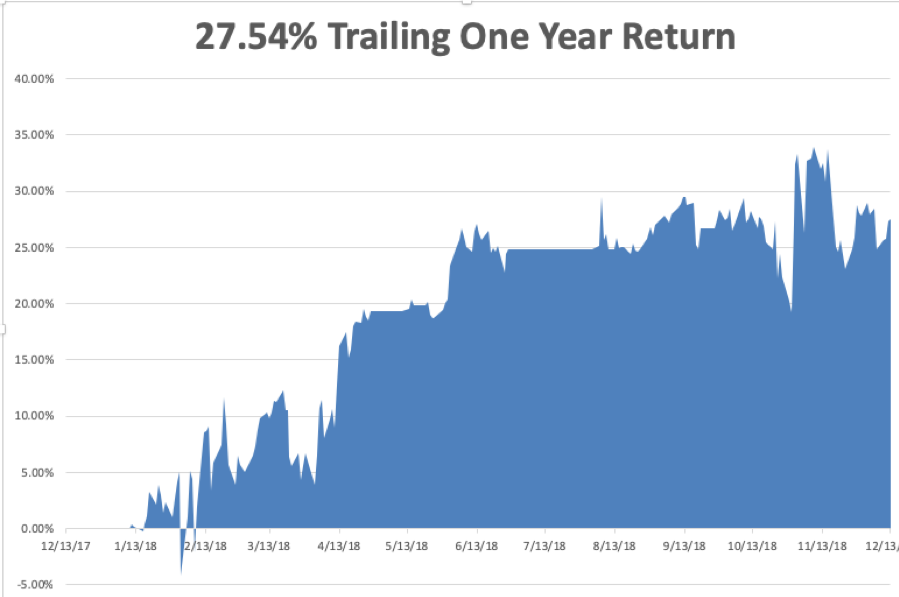

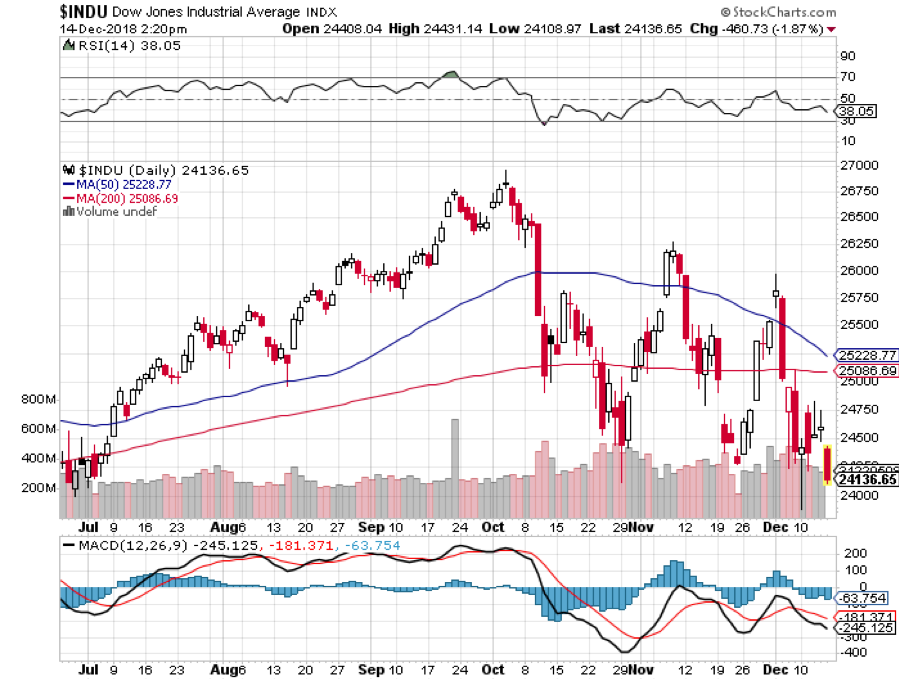
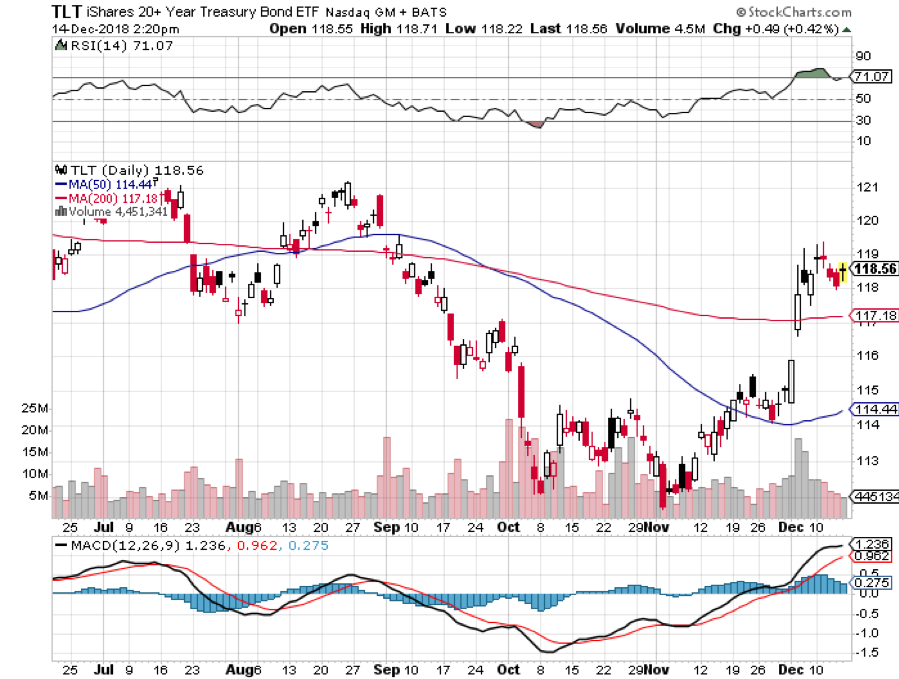

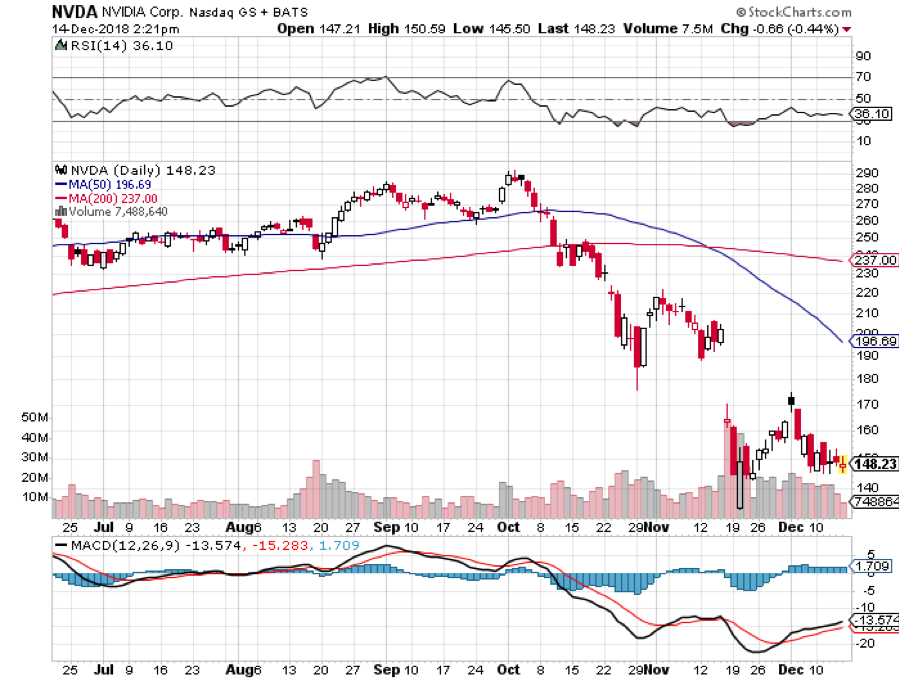


Global Market Comments
December 12, 2018
Fiat Lux
Featured Trade:
(STANDBY FOR THE COMING GOLDEN AGE OF INVESTMENT),
(SPY), (INDU), (FXE), (FXY), (UNG), (EEM), (USO),
(TLT), (NSANY), (TSLA)

The only good thing to be said about last week is that it only lasted four days. If it had been open a fifth, the Dow Average (INDU) might have fallen another 800 points.
This is the first time since 1972 that every single asset class lost money for the year, and we were in the heat of an oil shock back then.
To earn money to pay for college, I was running a handy little business buying junk heap Volkswagen Beetles in California, getting them repainted in Mexico, and then selling them for huge profits in Los Angeles. That’s me, ever the entrepreneur.
As it was, three consecutive 800-point drops are the sharpest selloff we have seen since the 1987 crash. But despite all the violence and handwringing, the market is exactly where it was nearly two months, six months, ten months, and one year ago.
Talk on the street is rife of hedge funds blowing up, fat finger trades, and algorithms run wild. This could be the first stock market correction untouched by human hands.
What we have seen is some of the most extreme volatility in history with no net movement. And you wonder why institutions are so relaxed.
Let’s face it, we have all had it way too easy way too long. Who makes an average annualized return of 33.87% for 10 years? Oops, that’s me.
What happens next? One more dive to truly flush out the last of the nervous leveraged longs and then the long-promised Christmas rally.
Remember, markets will always do what they have to do to screw the most people, and that would be stopping traders out of their positions and then closing the year at multi-month highs.
Apple (AAPL) in particular was pummeled mercilessly, besieged by analyst downgrades almost every day. Steve Jobs’ creation is now down a stunning $65, or $27.9%. It dropped 40% when Steve died. I’m sure both Apple and Warren Buffet are in there soaking up stock every day with the shares at a half-decade earnings multiple low and laughing all the way to the bank.
But here’s the problem with that logic. Fundamentals can be very dangerous in an out-and-out panic. As my friend John Maynard Keynes used to say, “Markets can remain irrational longer than you can remain liquid.” Apple and Warren Buffet can wait out this correction, but can you, especially if you are a trader? If the stock falls further, they’ll just buy more.
The week started with such promise in the euphoria and afterglow of the G-20 Summit in Buenos Aires. It only lasted 24 hours when we discovered that nothing the administration said was true, all refuted by the Chinese when they got home to Beijing.
On Thursday, we learned that while the president’s team was negotiating, they arrested of the scion of one of China’s top tech companies while changing planes in Canada for a vacation in Mexico. It was equal to arresting the number two at Apple.
That little tidbit alone was worth a drop of 1,600 Dow points. As a result, half of all senior executive visit to the Middle Kingdom were instantly cancelled. Who wants to have “Hostage” listed on their resume?
If that were the only thing to worry about, the market would have bounced back sharply the next day and we would all be back in the Christmas mood.
But it’s not. Recession forecasts are starting to multiply like rabbits.
The Fed is growing cautious with 4 of 12 districts reporting slowing growth, said the Wednesday Beige Book report. The word “tariffs” is mentioned 39 times and is cited as a major reason for the lack of business clarity, and therefore capital investment for 2019.
The bond market is calling for a recession as “inversion” become the word of the year. The 2 year-10 years spread has shrunk to 12 basis points, an 11-year low, while the 3 year-5 year is already inverted. Massive short covering of bonds by hedge fund has ensued.
The ensuing bond melt-up was the most extreme in years as heavily short hedge funds ran for the sidelines. Now that they’re out, it’s safe to sell short again.
The November Nonfarm Payroll came in at a weak 155,000, but headline unemployment still hugs a half-century low. I saw the first really solid evidence of a recession when I drove by a high-end housing project in an upscale neighborhood and saw that it was abandoned with all equipment and tools removed. The developer obviously froze construction to get out of the way of a rapidly slowing economy.
In fact, things have gotten so bad that they may start getting good again. Instead of raising rate three times like clockwork in 2019, the Fed may adopt a “one and done” policy in December. That is where the bond market received its recent shot of adrenaline.
I doubt it as our nation’s central bank is a profoundly backward-looking organization. If the economy was hot a year ago, that means interest rates have to be raised today.
When will someone start spiking the eggnog? An awful lot of people are starting to discount a 2019 recession no matter what the administration says. If the Santa Claus rally doesn’t start this week, it will be too short to notice.
My year-to-date return recovered to +28.42%, boosting my trailing one-year return back up to 30.17%. December is showing a modest gain at +0.62%. That last leg down in the NASDAQ really hurt and was a once-in-18-year event. And this is against a Dow Average that is down a miserable -1.6% so far in 2018.
My nine-year return nudged up to +304.89. The average annualized return revived to +33.87.
The upcoming week is light on data after last week’s fireworks. The CPI is the big one, out Wednesday. Hopefully, that will give us all time to attend our holiday parties.
Monday, December 10 at 8:30 AM EST, the November Producer Price Index is out.
On Tuesday, December 11, November Producer Price Index is out.
On Wednesday, December 12 at 8:30 AM EST, the all-important November Consumer Price Index is released, the most important read we have on inflation.
At 10:30 AM EST, the Energy Information Administration announces oil inventory figures with its Petroleum Status Report.
Thursday, December 13 at 8:30 AM EST, we get the usual Weekly Jobless Claims.
On Friday, December 14, at 8:30 AM EST, we learn November Retail Sales.
The Baker-Hughes Rig Count follows at 1:00 PM.
As for me, I will be spending my weekend assembling the ski rack for my new Tesla model X P100D. I’ll be damned if I can get the pieces to fit together, and what is this extra bag of parts for? I hope the car is made better than this!
As for my VW trading business from 46 years ago, repair work done on US registered cars in Mexico was then subject to a 20% import duty. When the customs officer leaned against the car to ask if I had any work done recently, I fibbed. As he walked away I notice to my horror that the front of his pants was entirely covered with fresh green paint.
I never went back. Stocks looked like a better bet.
Good luck and good trading.
John Thomas
CEO & Publisher
The Diary of a Mad Hedge Fund Trader
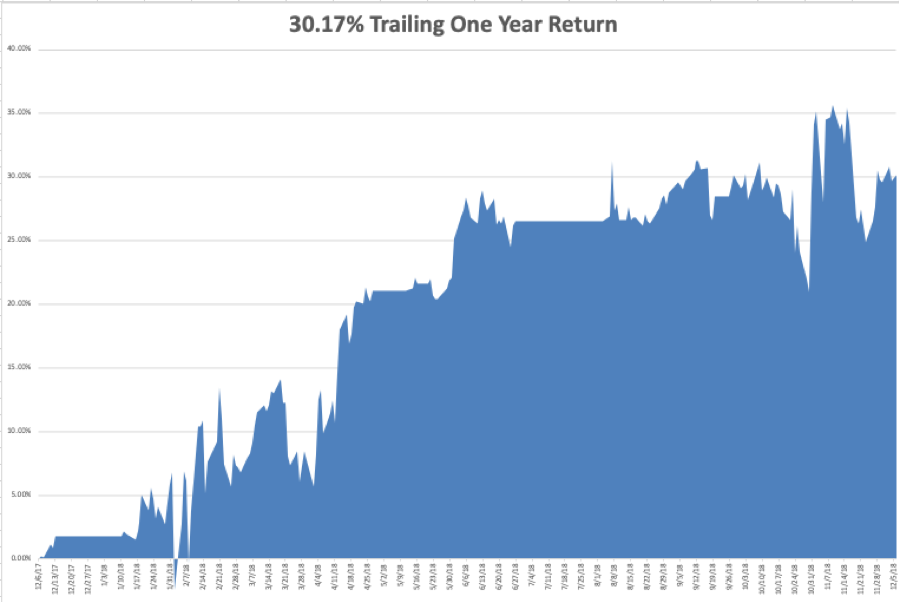
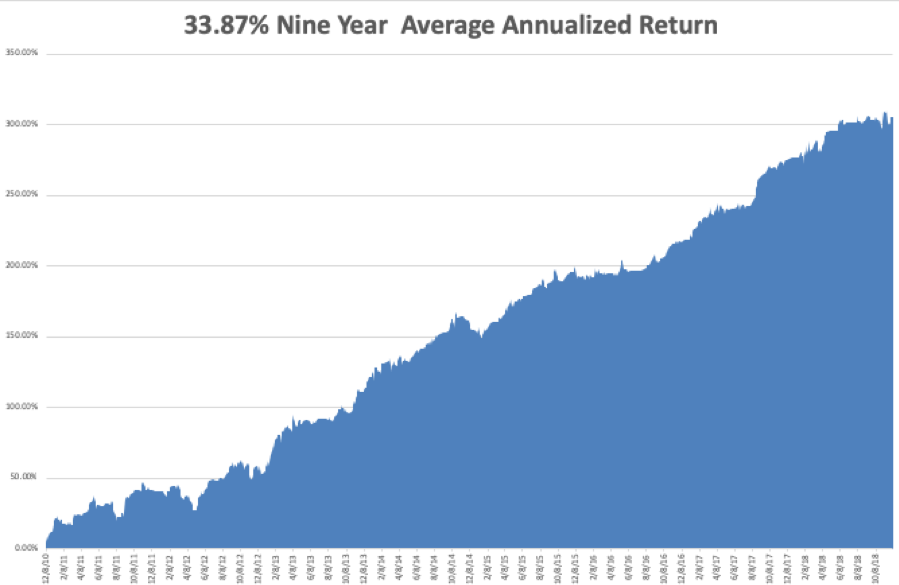
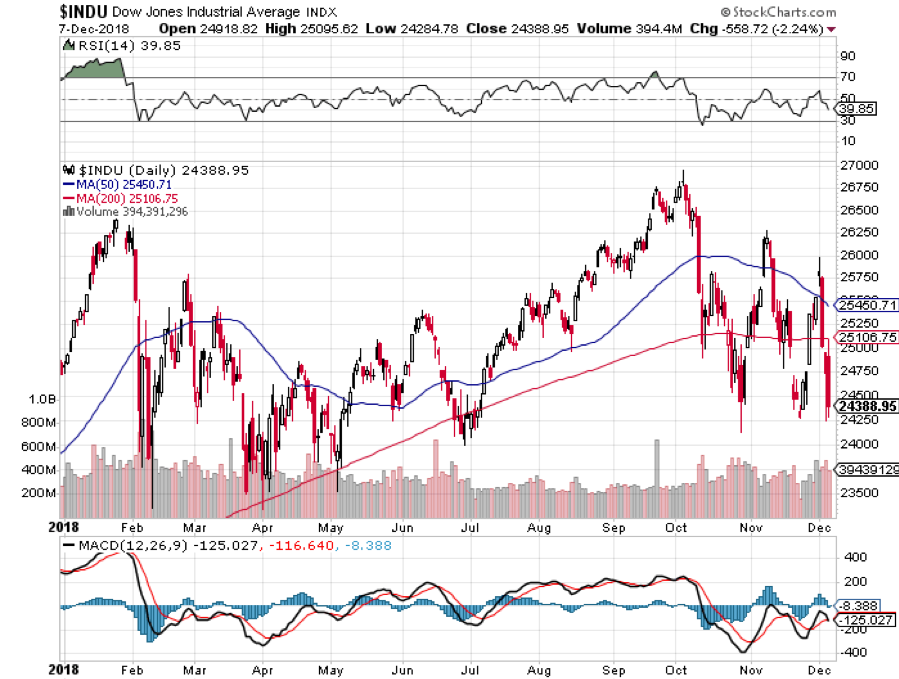

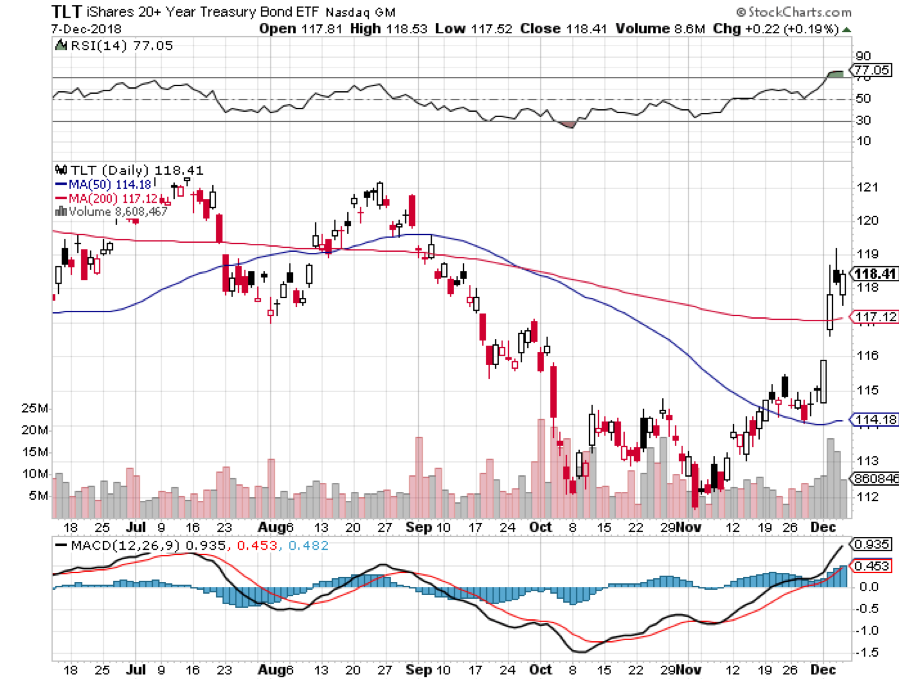
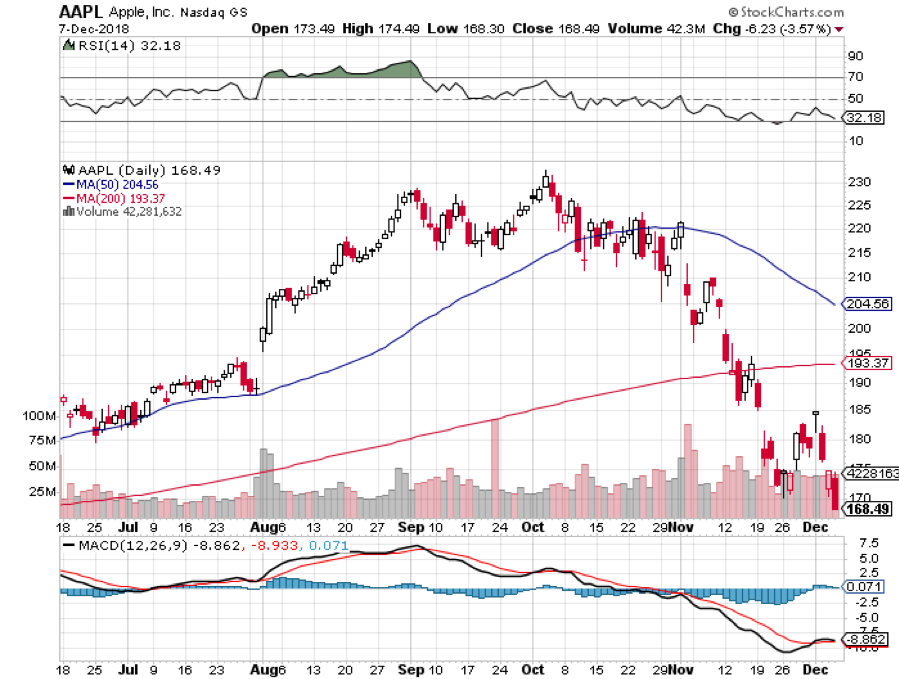

Global Market Comments
October 12, 2018
Fiat Lux
Featured Trade:
(WHY THE STOCK MARKET IS BOTTOMING HERE),
(SPY), (INDU),
(NETFLIX SAYS WE BECOME A NATION OF COUCH POTATOES),
(NFLX), (M), (AMZN), (TSLA), (DIS), (GOOG)

All good things must come to an end, and that includes bull markets in stocks.
But this one is not over yet. If my calculations are correct, the current correction should end right around here over the next week or two. Like the famed Monte Python parrot, the bull market is not dead, it is only resting.
My logic is very simple. In February, the Dow Average suffered a 3,300 point downdraft. However, at least 1,000 points of this was due to the overnight implosion of the $7 billion short volatility industry that spiked the (VIX) up to $50.
That trade no longer exists, at least to the extent that it did in January. There is no Velocity Shares Daily Inverse VIX Short Term ETN (XIV) blow up in the cards at tomorrow morning’s opening.
With the Dow Average down 2,200 points, or 8.14%, from its September high, the major indexes ought to bottom out right around here. I also expect the Volatility Index to peak here at $30.
Incredible as it may seem, the Dow Average has given up almost all of its 2018 gains. Unchanged on the seems to be a point that the market wants to gravitate to, and then sharply bounce off of.
That means the 200-day moving average for the S&P 500 should hold as well near $274, down 6.4% from all-time highs made only last week. That has provided rock-solid support for the index since the bull market began in 2009, except for brief hickeys in 2011 and 2015.
At these prices the PE multiple for the S&P 500 has plunged back down to only 16 times, providing substantial valuation support that has held for years. The economy is still growing at a 4% clip and I expect that to continue through the end of 2018.
The hissy fit between the White House and the Federal Reserve was the principal cause for the Wednesday 831-point selloff. There is a reason why the president has never been allowed to control interest rates in the United States. Telling the citizenry that the “Fed is loco” does not inspire confidence among stock buyers.
If he could, they would be zero, all the time, forever, and the US dollar would have the same purchasing power as the Zimbabwe one or Weimar German Deutsche Mark.
Another crucial factor that investors are missing is that we are now in the blackout period for Q3 earnings when companies are not allowed to buy their own stocks. Companies have almost become the sole buyers of equities in 2018 and are expected to reach a record high of $1 trillion in purchases this year.
A blackout means that the nice guy who has been buying all those drinks has suddenly become stuck in the bathroom for an extended period of time.
That makes the biggest buyers of their own stock like Apple (AAPL), Cisco Systems (CSCO), Amazon (AMZN), and Amgen (AMGN) particularly interesting.
The shackles come off Apple’s buybacks when the Q3 earnings are announced after the close on November 1, a mere 14 trading days away. Apple CEO Tim Cook has committed to buying $100 billion worth of Apple shares.
Finally, my Mad Hedge Market Timing Index, which has been worth its weight in gold, just hit its all-time low at 4 and is flashing an extreme “BUY”. The last time this happened was at the February 8 capitulation low.
Of course, we will probably still see some heart-stopping volatility in the run up to the election. But after that, I still expect a burst to new all-time highs. If my 3,000 S&P 500 target is hit, that means there is a potential 9.5% gain from today’s low.
Investors raced to unload winners in the run up to yearend. Now that many of those winners have become losers, the selling should abate. Oh, and that bond collapse? Bonds have actually gone up since the big stock selling started two days ago, taking yields down from 3.25% to 3.13%. At some point, someone will notice.
Unfortunately, making money in the market is no longer the cakewalk that it used to be. There’s no more loading the boat, and then going on a long cruise. From now on, we are going to have to work for our money.
We may see a bottom this morning when banks announce their Q3 earnings. JP Morgan’s Jamie Diamond starts his conference call at 8:30 AM EST and the entire investment industry will be listening with baited breath.
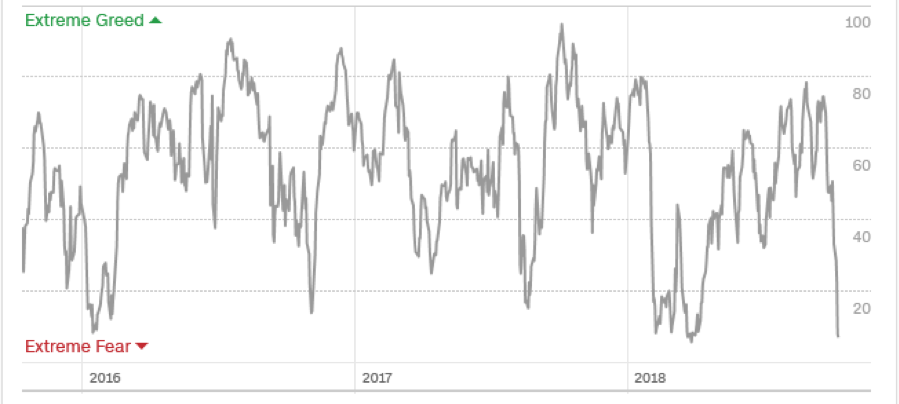
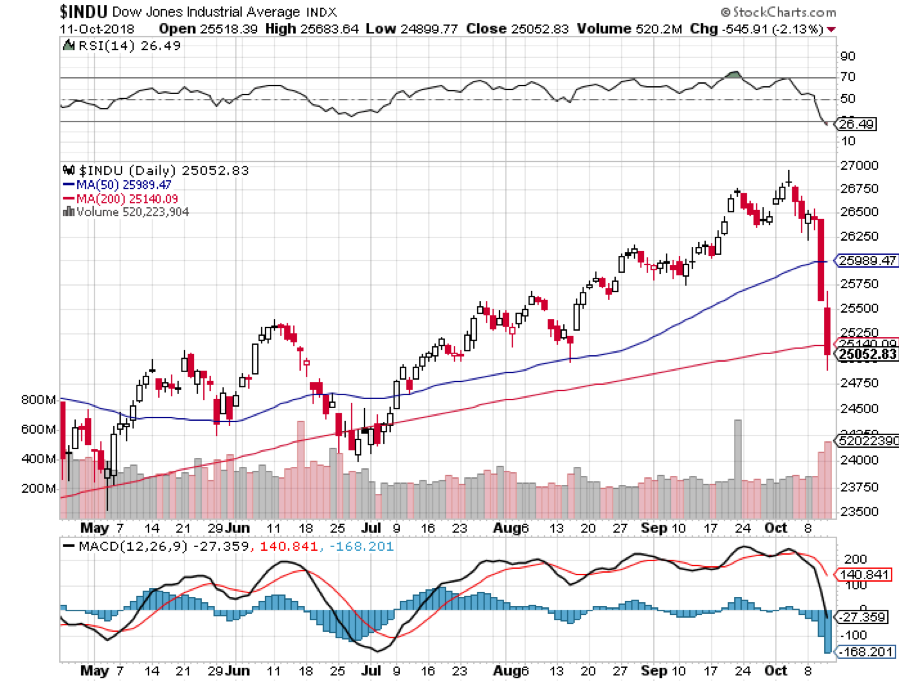
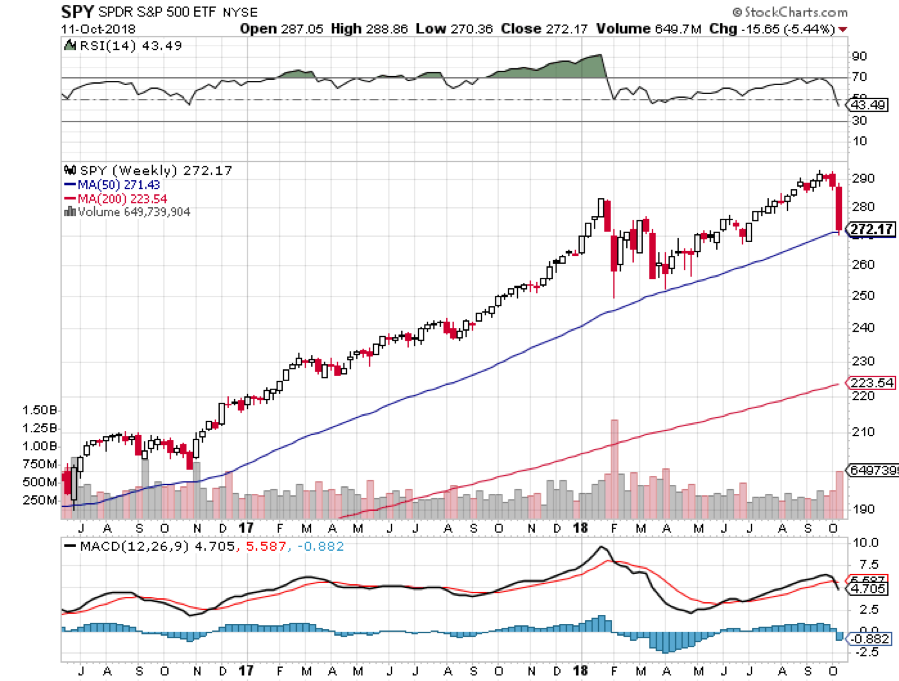

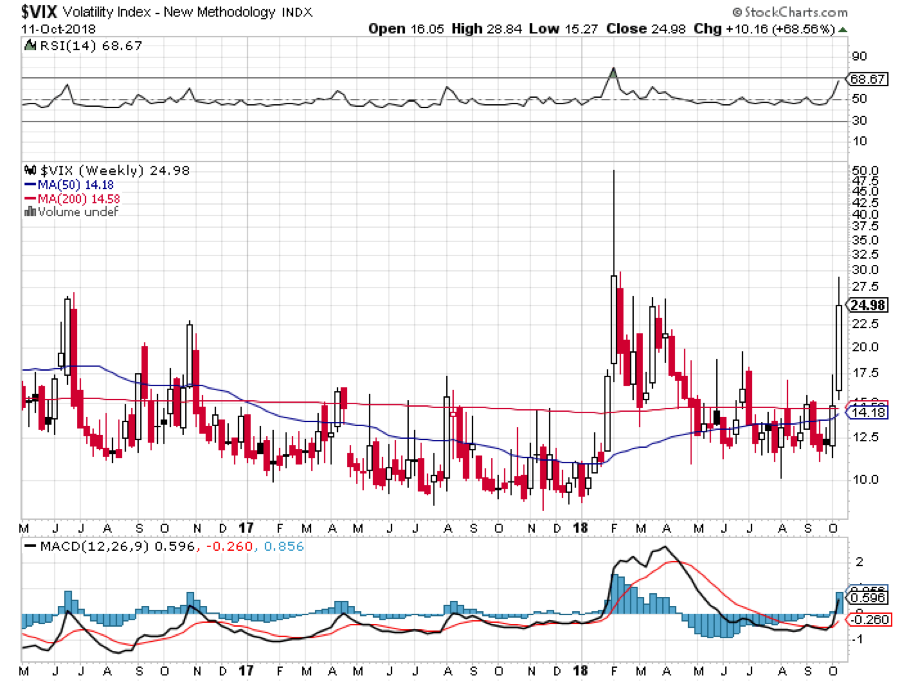

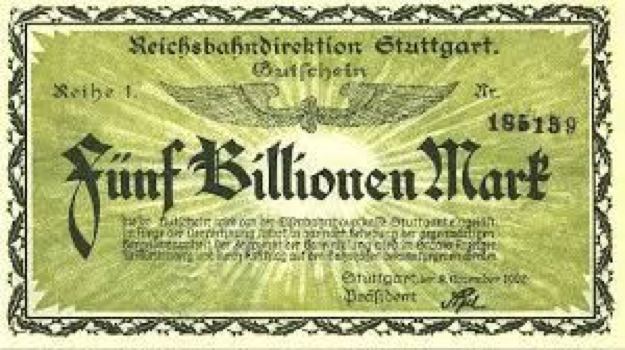

Global Market Comments
August 31, 2018
Fiat Lux
Featured Trade:
(MONDAY, OCTOBER 15, 2018, ATLANTA, GA, GLOBAL STRATEGY LUNCHEON),
(WATCH OUT FOR BEARS!), ($INDU),
(MORE BIOTECH AND PHARMA STOCKS TO SOAK UP)
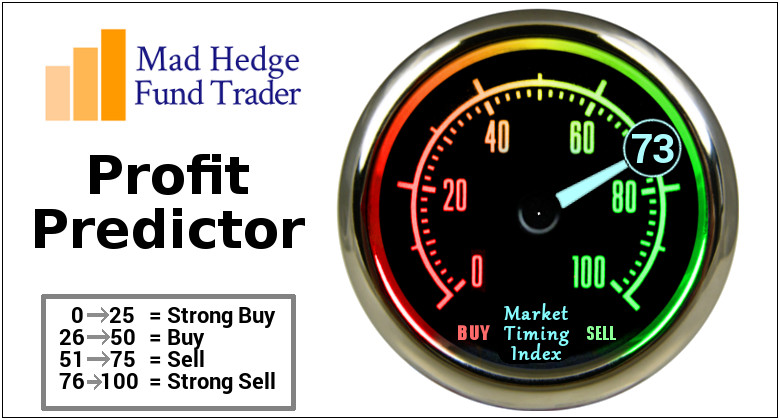
I just got off the phone with a hedge fund veteran who I have long known and respected. He showered me with 27 reasons why stocks were peaking out and were about to crash.
I told him he was right on every point, but that these were all arguments that future historians will put forward giving the origins of a bear market that started years before.
Right now there is only one bit of analysis that counts for traders and that is the amount of cash in the system, and that indicator is screaming “BUY.”
There is $50 trillion is excess liquidity sitting in cash accounts around the world looking for a home. With both Europe and Japan still in the quantitative easing business that number is expanding.
And what is the primary target of all this money? U.S. stocks, particularly technology ones.
In fact, I have been recently showered with charts, reports, and even tea leaves showing that stock markets are ridiculously high and headed for a fall. Look at the chart below showing the yield curve for the bond market and it shows that whenever it inverts, recessions and bear markets follow in every single case!
Warning: Yield curves are only months away from inverting.
There is another chart below a friend sent in illustrating the ratio of stock prices to home prices for the past 123 years. It is now approaching a peak seen only three times over the past century.
And it’s not like home prices have been sitting stationary either. The price for your personal residence has been rocketing as well, no matter where you live.
However, this chart shows something far more important. Market tops aren’t one-off events. They can take five or more years to play out. And we have just entered one of those long-term topping processes now.
Roll back the video tape. Remember our old friend, Federal Reserve governor Alan Greenspan? He uttered his “irrational exuberance” prediction for the stock market in 1996.
The Dow Average ($INDU) rose for four more years, nearly doubling in the process. Portfolio managers who followed his sage advice were later seen driving taxis in Manhattan.
So, while markets may be topping, this action could continue for quite some time, possibly well into the next decade. Therefore, don’t let news like we received today about the president imposing tariffs on $200 billion worth of Chinese imports scare you out of the market.
And I say this in full knowledge that September and October are usually the worst-performing months of the year. The six months after a midterm election are usually the best, always.
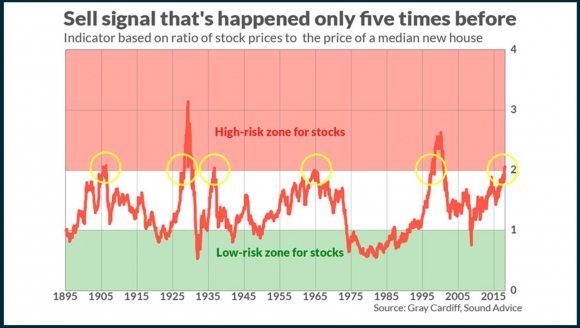
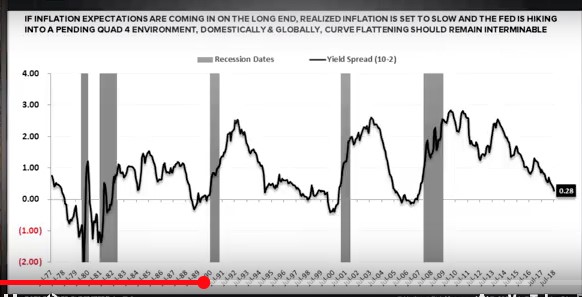
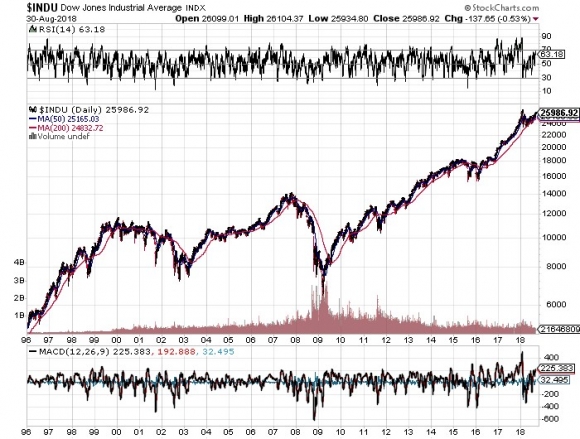

Legal Disclaimer
There is a very high degree of risk involved in trading. Past results are not indicative of future returns. MadHedgeFundTrader.com and all individuals affiliated with this site assume no responsibilities for your trading and investment results. The indicators, strategies, columns, articles and all other features are for educational purposes only and should not be construed as investment advice. Information for futures trading observations are obtained from sources believed to be reliable, but we do not warrant its completeness or accuracy, or warrant any results from the use of the information. Your use of the trading observations is entirely at your own risk and it is your sole responsibility to evaluate the accuracy, completeness and usefulness of the information. You must assess the risk of any trade with your broker and make your own independent decisions regarding any securities mentioned herein. Affiliates of MadHedgeFundTrader.com may have a position or effect transactions in the securities described herein (or options thereon) and/or otherwise employ trading strategies that may be consistent or inconsistent with the provided strategies.
This site uses cookies. By continuing to browse the site, you are agreeing to our use of cookies.
OKLearn moreWe may request cookies to be set on your device. We use cookies to let us know when you visit our websites, how you interact with us, to enrich your user experience, and to customize your relationship with our website.
Click on the different category headings to find out more. You can also change some of your preferences. Note that blocking some types of cookies may impact your experience on our websites and the services we are able to offer.
These cookies are strictly necessary to provide you with services available through our website and to use some of its features.
Because these cookies are strictly necessary to deliver the website, refuseing them will have impact how our site functions. You always can block or delete cookies by changing your browser settings and force blocking all cookies on this website. But this will always prompt you to accept/refuse cookies when revisiting our site.
We fully respect if you want to refuse cookies but to avoid asking you again and again kindly allow us to store a cookie for that. You are free to opt out any time or opt in for other cookies to get a better experience. If you refuse cookies we will remove all set cookies in our domain.
We provide you with a list of stored cookies on your computer in our domain so you can check what we stored. Due to security reasons we are not able to show or modify cookies from other domains. You can check these in your browser security settings.
These cookies collect information that is used either in aggregate form to help us understand how our website is being used or how effective our marketing campaigns are, or to help us customize our website and application for you in order to enhance your experience.
If you do not want that we track your visist to our site you can disable tracking in your browser here:
We also use different external services like Google Webfonts, Google Maps, and external Video providers. Since these providers may collect personal data like your IP address we allow you to block them here. Please be aware that this might heavily reduce the functionality and appearance of our site. Changes will take effect once you reload the page.
Google Webfont Settings:
Google Map Settings:
Vimeo and Youtube video embeds:
